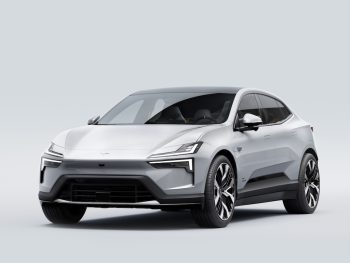Interview: Polestar on the right path
Having made big strides with sales and new model announcements in 2022, Matt Hawkins, head of sales at Polestar, tells John Challen why the electric brand is hoping for big fleet success this year and beyond.

Matt Hawkins, head of sales in the UK for Polestar
How optimistic are you feeling about this year for Polestar?
MH: Very! Last year, we couldn’t really catch a breath – the demand for our products grew so dramatically and so rapidly that our focus was on how to develop our processes, develop our systems and tweaking our approach to the fleet market to make sure that we are improving the service levels. There were a lot of things at the early part of last year that we weren’t particularly happy with but, thanks to the experience of the team working with the leasing companies, we were able to prioritise the most important elements and fix them. It was important to sit down with those key fleet partners and ask them about their priorities and how we could help.
I genuinely don’t think there is another organisation in automotive that has improved as much as we have in the last 12 months. We’ve still got a long way to go, but we’re still a very young brand. But the quality of the product that we have means that that demand is just going to continue growing – hopefully! Polestar 3 will be on the market soon and then Polestar 4, 5 and 6 will follow in the next few years. We will continue to grow, but make sure that we do so in line with the demand, rather than try and force product into the market.
How can you protect value in the vehicles?
MH: It’s really important for us that we maintain strong residual values and commit to a really robust remarketing strategy. We’re working hand-in-hand with leasing companies to support them when it comes to disposing of their cars at the end of their first life. We need to make sure the demand is still there for them to want to keep working with us. It’s fundamental that we get that right.

The Polestar 4 coupé-SUV arrives 2024
How have drivers reacted to the brand and how it operates?
MH: The feedback is unilaterally positive, especially when they come to one of our physical ‘spaces’. They are greeted and welcomed and treated as an individual customer, not a company car driver. With some drivers, there is an expectation that the level of enthusiasm would drop from staff when they hear that, but it doesn’t happen with us. We are keen to engage with all customers, in a way that is informal and conversational, set in a relaxed environment.
When that driver goes away and talks to work colleagues or friends, they will hopefully talk about how it was a positive experience, which spreads the message about us further.
When we spoke last year, you suggested fleet would account for about 70% Polestar’s business. What about this year?
MH: We are looking at slightly over 80% of our business being in fleet in 2023. If the market conditions stay as they are – such as BiK incentives towards businesses and carbon reduction targets – that will be the percentage split. As more and more businesses start to pick up on the benefits of Salary Sacrifice, it draws customers away from the retail space. The benefits of an EV on a salary sacrifice scheme far outweighs any benefit of an internal combustion car, so it presents plenty of conquest opportunities for us.
One of the great benefits of the Polestar setup and the way that we’ve positioned ourselves is that because there’s no dealer or traditional dealer network, there’s no captive finance company. There is nothing that says that we have to force cars into a retail channel or a fleet channel. For us, it’s just about each driver
Where are you seeing conquest customers come from?
MH: There’s a mix of drivers coming from traditional manufacturers and other EV brands. There are manufacturers in the marketplace who were considered new five years ago, but are now established players. At the same time, there are other start-ups coming into the market now, who would consider us to be an established brand, even though we’ve only been here for two years. The industry is going through so much flux and change, but we need to focus on our job. That means putting ourselves out in the market and demonstrating to drivers and potential drivers how we differentiate from all of those other brands, whether they are legacy manufacturers or new entrants.
What has been the reaction from fleets to Polestar 3 and how will it fit into the fleet proposition?
MH: It has been very well received by the people that have seen it, but it’s still very early days. A key part of our approach with the car is to ensure there is a big focus on getting key fleet players to come and see it as soon as they can. It’s a much bigger, more expensive and niche vehicle than Polestar 2 so we know it will attract a different audience. It’s more of an aspirational car that builds the Halo-type proposition that we’ll eventually have with the likes of Polestar 5 and 6.
The fact that it appeals to a different customer means that we need to be very conscious of how that organic growth is going to look for Polestar 3. It’s positioned extremely well, particularly from an equipment and specification point of view. But also, from a price point of view it’s very, very attractive and I think that will be part of the core of its success.












